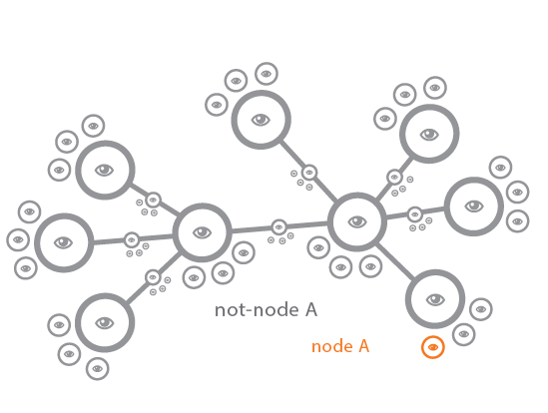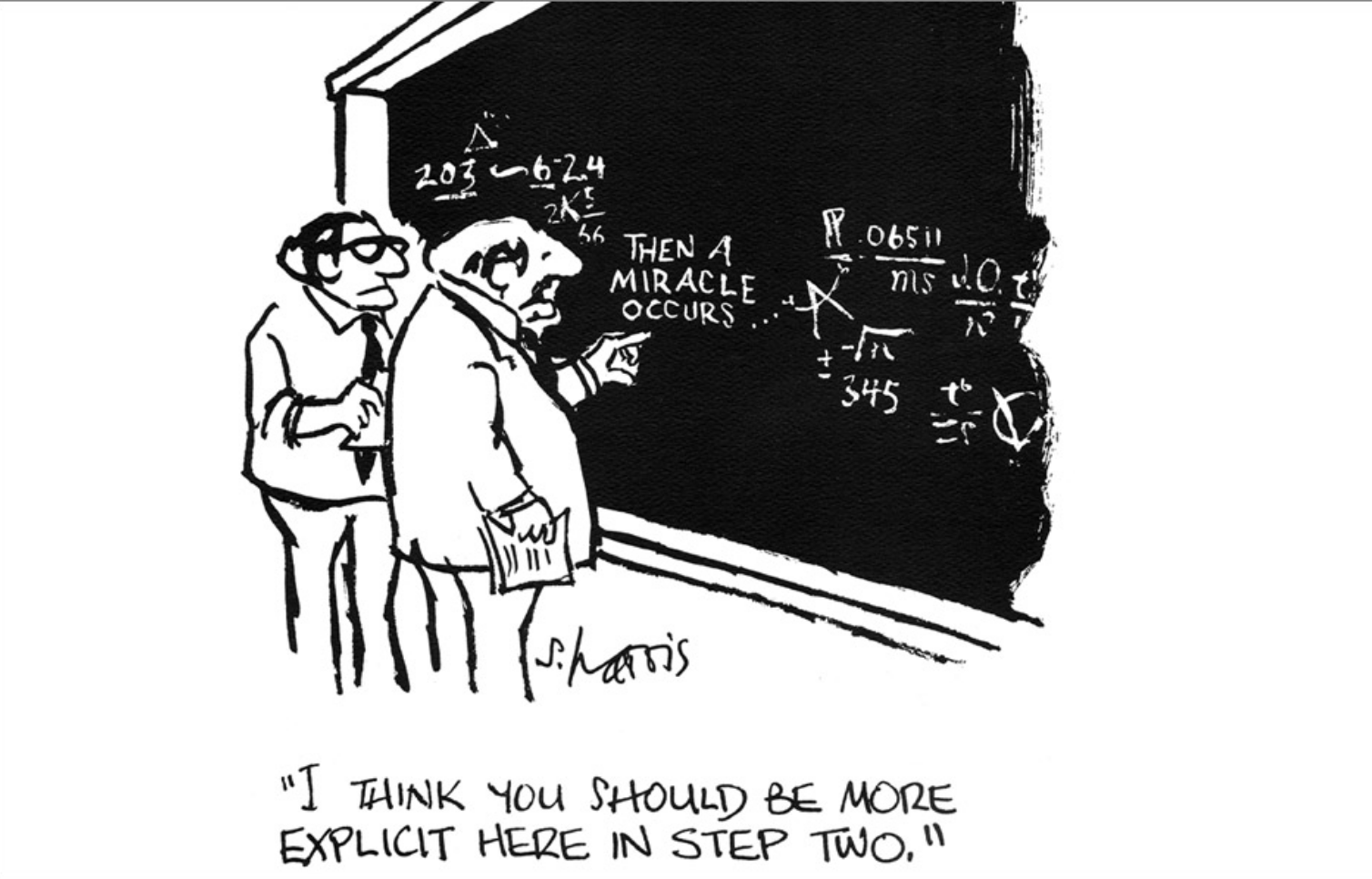Emergence: One of the Sacred Cows of Systems Thinking
The discussion of emergence is always one that gets tempers roiled in the systems thinking community. Indeed, it is one of a few of what I call "sacred cows" (or common, unquestioned tropes) of the ST community that are important to reconsider.
We won't discuss all of these sacred cows in this blog, but instead focus on emergence or the common trope that the whole is more than the parts, which is never true.
Emergence: The whole is greater than the sum of its parts
For more detailed and scholarly work on this topic read an excerpt here.
In a recent thread in the systems thinking community, one of the members asked me to provide a replacement statement or metaphor for the common understanding of emergence and I did. He responded with a question that I thought was simple but very important.
"How is the following statement useful or practical? 'The whole is precisely equal to all the stuff that is part of it'
An Example
The whole exhibits qualities that are not always "visible" in the parts. We call this emergence. For example, in foraging ant colonies we see a form of intelligent behavior at the colony-level even though no individual ant is "intelligent." So intelligence in these systems is an emergent property. But that intelligence isn't a mystery and isn't "more" than the whole, it is contained in the whole in the simple rules. One rule in particular explains it, which is that ants will not cross a pheromone trail. The collective dynamics (multiplication) of that rule yields intelligent behavior at the colony level. That simple rule (along with others) governs the interactions (relationships) between ants. When we mathematicians and scientists say that the whole is more than the sum we mean it literally as sum (+ or addition). It is more than the sum (additive) because it is dynamical and multiplicative or sometimes exponential. But we don't mean that equalities no longer apply. The whole still equals what it is made up of (which includes relationships!). We can model and experiment on these systems and we can actually dampen the intelligence by dampening the interaction rules. There's a direct connection between these interaction rules (which are part of the system) and the emergent properties.
And this is important... for 2500 years when it came to marveling over birds and fish and ants, we assumed it had to do with leadership or something. It wasn't until we saw the rules governing interactions that the problem was solved in the 1980s. Without focusing on the simple rules, emergence remains a mystery to be filled with many fantastical explanations. By seeing the connection to the simple interaction rules, it becomes yet another of nature's lovely and elegant evolutionary solutions.
Understanding is practical
Let me first say that as a scientist, understanding itself is the most useful and pragmatic goal. So, just making the statement more accurate is practical enough, because it helps us to better understand system behaviors we might characterize as “emergent.” Also, because we are talking about deeper ideas in ST which, as was mentioned earlier, are threshold concepts, this particular insight is even more important and practical because it is theoretical in nature. Kurt Lewin was fond of saying, “There’s nothing more practical than a good theory.” I agree with him, despite the lament of my graduate students. As a replacement for the ever popular but inaccurate statement, “the whole is greater than its parts” (which is never true) it's a vast improvement. So, that should suffice: it increases understanding. Or alternatively, it decreases misunderstanding.
But, there is far more that lurks beneath this seemingly banal statement. Indeed, a deep understanding of systems thinking itself swims beneath the surface. Again, in comparison, lurking beneath the statement “the whole is greater than its parts” (which is never true) is a dark quagmire of misunderstanding that takes us further and further away from the very purpose of statements of science made for public consumption and understanding [and a mantra at our research lab], simplification with fidelity! So, let’s take a deeper look at the abundance that this new statement affords us…
Like Garlic for mysticism
The second practical contribution is that it wards off mysticism, which in our current climate of religiosity is quite important. The statement “the whole is greater than its parts” creates a tiny sliver of an opening that folks, if they wanted to, could drive a really big mystic truck through. Sometimes without even knowing it. Because there is something not in the parts that shows up in the whole, there is suddenly the impression that something meta-physical, mysterious, or mystical is going on. Perhaps God? A higher power? Chakras? Or, crystal harmonics? But the truth is emergence doesn’t mean that something mysterious is going on (unless mysterious simply means “we don’t know” or “we don’t really have the computing time and power to figure it out”). But nothing truly mysterious is going on. There are just qualities of the whole that are not seen in the parts. That’s all. That’s what emergence means. There are qualities of the whole that are not seen in the parts. It doesn’t say anything about we don’t need to look at the parts, or one couldn’t deduce, retroactively, from the parts why those qualities emerge. It does sometimes mean that it would be difficult to predict from the parts what will emerge. But either way. There’s no mystery. We know that the behavior of the whole is coming from itself. Not from anywhere, or anyone, else. It is simple and sound: what goes into the left side of the equation is balanced (equal to) what goes into the right side of the equation. The parts and the whole are equalities. They are different versions (reductionistic and holistic) perspectives on the same thing: All the Parts = Whole.
If something is part of the whole isn't it a part?
The third thing this statement does is quite simple but also sublime. It forces us to take a critical look at how we perceive things. In particular, what we call parts. Parts are parts if they belong to the whole. Alternatively, you could say that something is a part if it is contained by the whole. Here lies an important distinction because for hundreds of years, we’ve been arbitrarily deciding that something is part of the whole only if it is structural. This leaves out all the dynamical things that are also part of what makes up the whole—the relationships (a.k.a, interactions, connections, links, etc). So let’s take a metaphorical equation and see how people contort and get tied up in knots about emergence:[1]
Here’s a truism about parts/wholes and emergence:
IF, The Whole = All its structural AND relational parts
THEN, emergence is something we see in the whole that wasn’t immediately clear to us but nevertheless was there, in the parts.
Here’s a contortion that occurs when we arbitrarily conclude that the relationships that are literally part of the whole system, are not "parts":
IF, The Whole = Only its structural parts
THEN, emergence is something that wasn’t in the parts but it was in the whole. Where could it have come from then?
The answer seems obvious doesn't it? The emergence is a product of the interactions (which could be quite enormous and complex). In the first example, the onus is on us to perceive things more accurately. In the second example, the onus is on us to solve a mystery that isn’t really there. The mystery is one of perception. If we remove the relationships from consideration as parts then of course there is going to be a mystery byproduct to be solved.
We should think of the whole as equal to the parts because whatever belongs to the whole is part of it, a priori. The equation of parts and whole is equivalent. If it is not, then something went wrong. Something is amiss. But just because the equation has not been balanced does not mean that we need to invent mysterious or mystical causes. It more than likely means that we are missing something or have left something out. That something is almost always relationships (a.k.a., interactions, connections, links, edges, etc).
Metaphorically speaking, this is not unlike a conceptual conservation of energy law. Energy does not disappear. If it appears to have disappeared we are guided by the better judgement that it went somewhere. Likewise, wholes are not more than their parts. If it appears that they are then we are guided by our better judgement to look more deeply or to consider that our mental models are wrong.
Relationships exist
This brings us to the fourth important thing the statement does for us pragmatically. It causes us to truly embrace relationships and the short shrift we have given them. Relationships are not merely lines between things, they are things in and of themselves. They are physical, they are parts, and they belong to their wholes. Here again, we suffer from our own thinking errors. We see a structural part (a component) and we know that if we zoomed into that part, we would see that it is a whole made up of many related parts. If we then zoomed into one of those parts, we would see the same. And if we continued to drill down we would eventually realize that every structural part is reduced to relationships between relationships. Because every structural part is reducible to relationships between parts, we must confess that the relationships are things. Therefore, we should end the oppression of relationships and grant them thing status.

In practical terms, this means that in a complex network made up of nodes and edges, all of the edges are nodes, too. And, all of the nodes (which means all of the edges) can be wholes made up of successfully smaller related parts. Add boundary conditions for each of these identified nodes and relational-nodes and add perspective and you have a universal theory of systems thinking. Not bad for a little statement.


It says to us "if my conclusion is that the 'whole<parts' then I am definitely missing something and need to keep looking because the whole always exactly equals the parts. I MUST be missing something."
In the same way that the conservation law tells us that "if my conclusion is that energy has suddenly appeared out of nowhere or disappeared mysteriously, then I need to look harder, because energy is neither created nor destroyed. I MUST be missing something."
[1] It is clear that what people are attempting to explain is that the emergent property of a system can't be understood by looking at only one part, but must must be understood by looking at all the parts together. But it is also clear that most folks leave relationships out of the definition of parts. The essential problem is this: IF Relationships are PART of the whole, then by definition they are PARTS of the whole. Therefore, the whole is always exactly equal to its parts. Funny story. I actually spent my doctoral days traipsing the planet interviewing folks and eventually tracked down that this little "error" is entirely derivative of a period when physicists arbitrarily decided to identify "parts" ONLY as being structural (rather than dynamical/relational). At that moment in time, the die was cast and today we have many misleading and confusing explanations that result from that entirely arbitrary and less-than-logical decision.
.png?width=150&height=150&name=CRL%20GOAT%20Logo%20(4).png)


